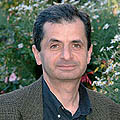|
Plenary Lecture
Constitutive Modeling of Soft Biological Tissues: Some Problems and Advances
in their Solution

Professor Mikhail Itskov
Department of Continuum Mechanics, RWTH Aachen University
Eilfschornsteinstr. 18, 52062 Aachen, Germany
itskov@km.rwth-aachen.de
Abstract: Soft biological tissues are complicated, highly functional
natural structures. The distribution, arrangement and interaction of their
constituents lead to a diversity of mechanical properties like e.g. strong
anisotropy, highly non-linear behavior, the ability to undergo large elastic
strains or deformation induced softening in the form of preconditioning.
Facing this variety, development and application of constitutive models is not
a trivial task and many methods successfully applied to engineering materials
fail to describe biological tissues adequately.
Besides the requirements from a biological perspective, any appropriate
constitutive model is expected to yield physically reasonable results. When
mechanical boundary value problems are considered, the existence of a solution
is desired. Thereby, the issue of material stability also plays an important
role. For hyperelastic materials, both these conditions can be fulfilled if
the strain energy function is polyconvex and coercive. We propose a
generalized polyconvex anisotropic strain energy function represented by a
series with an arbitrary number of terms. Each term of this series a priori
satisfies the condition of the energy and stress free natural state. The
collagen fiber alignment is taken into account by means of structural tensors,
where orthotropic and transversely isotropic material symmetries appear as
special cases. The model has successfully been applied to simulate rabbit
skin, bovine pericardium, porcine myocardium, human aortic and other arterial
tissues.
For material characterization, biological tissues are usually tested in a
preconditioned state. However, when living tissues are considered, the virgin
response and preconditioning behavior itself can become crucial. For example,
the mechanical behavior of human organs during surgery corresponds rather to a
virgin than to a preconditioned state. The phenomenon of preconditioning is
taken into account by an evolution of material parameters in the proposed
hyperelastic model. The well-known Mullins effect can be obtained as a special
case of this approach.
|